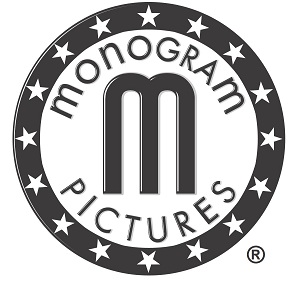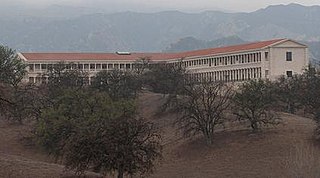Related Research Articles

Paramount Pictures Corporation, doing business as Paramount Pictures is an American film and television production and distribution company and the namesake subsidiary of Paramount Global. It is the sixth-oldest film studio in the world, the second-oldest film studio in the United States, and the sole member of the "Big Five" film studios located within the city limits of Los Angeles.
Radley Metzger was an American pioneering filmmaker and film distributor, most noted for popular artistic, adult-oriented films, including Thérèse and Isabelle (1968), Camille 2000 (1969), The Lickerish Quartet (1970), Score (1974), The Private Afternoons of Pamela Mann (1974), The Image (1975), The Opening of Misty Beethoven (1976) and Barbara Broadcast (1977). According to one film reviewer, Metzger's films, including those made during the Golden Age of Porn (1969–1984), are noted for their "lavish design, witty screenplays, and a penchant for the unusual camera angle". Another reviewer noted that his films were "highly artistic — and often cerebral ... and often featured gorgeous cinematography". Film and audio works by Metzger have been added to the permanent collection of the Museum of Modern Art (MoMA) in New York City.

Republic Pictures Corporation was an American film studio corporation that originally operated from 1935 to 1967, based in Los Angeles, California. It had production and distribution facilities in Studio City, as well as a movie ranch in Encino.

The Hammer Museum, which is affiliated with the University of California, Los Angeles, is an art museum and cultural center known for its artist-centric and progressive array of exhibitions and public programs. Founded in 1990 by the entrepreneur-industrialist Armand Hammer to house his personal art collection, the museum has since expanded its scope to become "the hippest and most culturally relevant institution in town." Particularly important among the museum's critically acclaimed exhibitions are presentations of both historically overlooked and emerging contemporary artists. The Hammer Museum also hosts over 300 programs throughout the year, from lectures, symposia, and readings to concerts and film screenings. As of February 2014, the museum's collections, exhibitions, and programs are completely free to all visitors.

Monogram Pictures Corporation was an American film studio that produced mostly low-budget films between 1931 and 1953, when the firm completed a transition to the name Allied Artists Pictures Corporation. Monogram was among the smaller studios in the golden age of Hollywood, generally referred to collectively as Poverty Row. Lacking the financial resources to deliver the lavish sets, production values, and star power of the larger studios, Monogram sought to attract its audiences with the promise of action and adventure.

El Capitan Theatre is a fully restored movie palace at 6838 Hollywood Boulevard in the Hollywood neighborhood in Los Angeles, California, United States. The theater and adjacent Hollywood Masonic Temple are owned by The Walt Disney Company and serve as the venue for a majority of the Walt Disney Studios' film premieres.
The UCLA School of Theater, Film and Television, is one of the 12 schools within the University of California, Los Angeles (UCLA) located in Los Angeles, California. Its creation was groundbreaking in that it was the first time a leading university had combined the study of theater, filmmaking and television production into a single administration.

Seven Arts Productions was a production company which made films for release by other studios. It was founded in 1957 by Eliot Hyman, Ray Stark, and Norman Katz.

The Packard Humanities Institute (PHI) is a non-profit foundation, established in 1987, and located in Los Altos, California, which funds projects in a wide range of conservation concerns in the fields of archaeology, music, film preservation, and historic conservation, plus Greek epigraphy, with an aim to create tools for basic research in the Humanities.

The National Audiovisual Conservation Center, also known as the Packard Campus for Audio-Visual Conservation, is the Library of Congress's audiovisual archive located inside Mount Pony in Culpeper, Virginia.
A movie ranch is a ranch that is at least partially dedicated for use as a set in the creation and production of motion pictures and television shows. These were developed in the United States in southern California, because of the climate.
William Job "Bill" Stout was an American journalist and sometime actor, known for his radio and television broadcasting career with CBS News.

Bluebeard's Eighth Wife is a 1938 Paramount Pictures American romantic comedy film directed and produced by Ernst Lubitsch and starring Claudette Colbert and Gary Cooper. The film is based on the 1921 French play La huitième femme de Barbe-Bleue by Alfred Savoir and the English translation of the play by Charlton Andrews. The screenplay was the first of many collaborations between Charles Brackett and Billy Wilder. The film is a remake of the 1923 silent version directed by Sam Wood and starring Gloria Swanson.

Hearst Metrotone News was a newsreel series (1914–1967) produced by the Hearst Corporation, founded by William Randolph Hearst.
Dan Mazeau is an American screenwriter. While attending the MFA screenwriting program at UCLA, he wrote a family fantasy "The Land of Lost Things" and the script was set up at Nickelodeon/Paramount Pictures, with Arnold Kopelson producing. Mazeau was hired by Dan Lin and Warner Bros. to adapt Jonny Quest. He was named one of Variety's "10 Screenwriters to Watch" in 2008 and the script was on the Blacklist that same year.

Bluebeard's 8th Wife is a 1923 American silent romantic comedy film produced by Famous Players–Lasky and distributed by Paramount Pictures. It was directed by Sam Wood and stars Gloria Swanson. The film is based on the French play La huitième femme de Barbe-Bleue by Alfred Savoir which is based on the Bluebeard tales of the 15th century. The play ran on Broadway in 1921 starring Ina Claire in the Swanson role.
The L.A. Rebellion film movement, sometimes referred to as the "Los Angeles School of Black Filmmakers", or the UCLA Rebellion, refers to the new generation of young African and African-American filmmakers who studied at the UCLA Film School in the late-1960s to the late-1980s and have created a black cinema that provides an alternative to classical Hollywood cinema.

Clara Bow (1905–1965) was a 16-year-old living in the New York City borough of Brooklyn when she won the 1921 nationwide "Fame and Fortune Contest" advertised in Motion Picture Magazine. After submitting their autobiography with a completed entry form clipped from the magazine, finalists were given multiple screen tests. As the winner, she was cast in a small role in the silent era film Beyond the Rainbow. Although her part was eventually edited out, the contest inspired her to pursue an acting career. She relocated to Los Angeles and signed with producer B.P. Schulberg. Her 1927 starring role in It, about an attractive and charismatic young woman, led the public to label Bow the "It girl". Over the next two decades, she would make more than 40 silent era films, the majority of them under contract to Paramount Pictures.

Audrey Young was an American film actress and a big-band singer who was most active in the 1940s. She was the wife of director Billy Wilder.
A Manly Man is a 1911 short film, starring Mary Pickford.
References
- 1 2 3 Olsen, Mark (2021-01-06). "May Hong HaDuong first woman and person of color to lead UCLA Film Archive". Los Angeles Times . Retrieved 2022-10-23.
- ↑ Strauss, Bob (2019-08-12). "UCLA's Film & Television Archive has a classical yet state-of-the-art home at The Stoa in Santa Clarita". Los Angeles Daily News . Archived from the original on August 12, 2019. Retrieved 2022-10-23.
- ↑ Staff (June 2, 2011). "Smooth Operator: The Opulent Eroticism of Radley Metzger". UCLA Film and Television Archive. Retrieved January 28, 2016.
